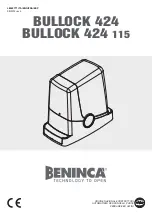
PSI Operational Description
This system monitors the tire pressure for each of the tires on the car. It provides basic tire pressure
information and warning messages to the driver when the tire pressure is too high or too low. It also
provides warning messages when the system is not functioning properly. A tire pressure sensor in each
wheel will broadcast a radio frequency tire pressure signal with a unique ID and tire pressure status to the
receiver in the EVIC. The PSI system analyzes this information based on the unique ID from the message, it
determines which tire has sent the information. This tire pressure information is then displayed on the EVIC
display in such a way as to indicate if a tire has a low or high pressure. Pertinent warning messages will be
displayed if any of the tire pressures go too low or too high. In addition, if the tire pressure sensor
transmitter battery voltage starts to go too low in the transducers or if they are not operating properly then
messages displaying these warnings will be displayed on the EVIC display.
PSI Train Mode of Operation
In order for the system to know which tire relates to which pressure transducer, it is necessary to train the
system after installation of tires and after any tire rotation or change. To train the PSI system place the
ignition in the RUN position and then press the MENU button on the EVIC until the display says “Retrain
Tire Sensors”, at this point press the STEP button until the option “YES” is displayed. The EVIC will
display which tire needs to be trained first. Proceed to that tire and place either a magnet or a 125 kHz
transponder within close proximity to the pressure transducer on that tire. When the tire is trained the PSI
system will cause the vehicle to provide a single horn chirp. At this point, proceed to the next tire, which is
indicated by the display on the EVIC. Repeat this process for each of the tires.
This device complies with FCC rules part 15. Operation is subject to
the following two conditions: (1)This device may not cause harmful
interference, and (2)This device must accept any interference that may
be received including interference that may cause undesired
operation. WARNING: The device has been tested and complies with
FCC and IC rules. Changes or modifications not expressly approved
by the party responsible for compliance could void the user's authority
to operate the device.
The term "IC:" before the certification/registration number only
signifies that Industry Canada technical specifications were met.
NOTE: This equipment has been tested and found to comply with the
limits for B digital device, pursuant to part 15 of the FCC Rules. These
limits are designed to provide reasonable protection against harmful
interference in a residential installation. This equipment generates,
uses, and can radiate radio frequency energy and, if not installed and
used in accordance with the instruction manual, may cause harmful
interference to radio communications. However, there is no guarantee
that interference will not occur in a particular installation. If this
equipment does cause harmful interference to radio or television
reception, which can be determined by turning the equipment off and
on, the user is encouraged to try to correct the interference by one or
more of the following measures:
-
Reorient or relocate the receiving antenna.
-
Increase the separation between the equipment and receiver.
-
Connect the equipment into an outlet on a circuit different from
that to which the receiver is connected.
-
Consult the dealer or an experienced radio/TV technician for
help.






















